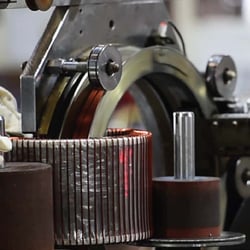It's not easy to narrow down the toughest production schedule problems schedulers face. We're hard-pressed to even imagine a "day in the life" guidebook for the manufacturing schedule heroes that balance inputs like materials, resources, inventories, customer service obligations, on-time order commitments, business rules, maintenance needs, and myriad other requirements to tackle complex optimization problems. We do know that there are three particularly difficult — yet common — situations that cause angst for shop floor schedulers that use spreadsheets, a whiteboard, or other manual methods to respond when the unexpected happens in the plant. Companies that arm production schedulers with an advanced planning and scheduling solution can respond and adapt to constantly changing conditions on the shop floor. Manufacturers that rely solely on the ERP system aren't usually equipped to handle events that happen in real time on the shop floor.
A good planning and scheduling solution empowers your production scheduler to quickly address the everyday problems that disrupt production, drive up costs, and cause supply chain challenges. The three toughest problems production schedulers face almost universally are labor shortages, unplanned downtime, and rush orders.
%20760x427.jpg?width=375&height=211&name=3%20Production%20Schedule%20Problems%20(and%20how%20to%20solve%20them%20like%20a%20boss)%20760x427.jpg)
Tackle Rush Orders Like a Boss
How does your shop deal with this scenario: The Rush Order Bombshell. The job that’s critical for a key client and a lot of times has everybody teetering on the edge of “Can we pull this off?” If you have orders and jobs like this, good job for being customers’ go-to shop to get things done. Rush orders don’t have to be a crisis, especially for companies that use production planning and scheduling software.
If your production scheduling system has a capable to promise feature, you can quickly check for capacity and materials to complete a rush order, and how a rush order will affect other jobs or orders on the production schedule. It also lets you reserve capacity on the schedule until customer service has entered the order into the business system.
Here's one approach production planners use to tackle rush orders:
Deal with Labor Shortage Like a Boss
Even a labor shortage for just one shift can have far-reaching implications on reputation, contract commitments, and even revenue. How your production scheduler deals with labor shortages can help the plant minimize short-term havoc and avoid long-term business consequences. The production scheduler’s mission is to not leave plant managers hanging to “make do” with what they have available and meet orders “as best they can.” If your scheduler has access to production planning and scheduling software, then chances are they don’t have to manually recreate the production schedule by hand, which is a time-intensive undertaking that could also lead to missed orders and an inefficient use of resources.
Planning and scheduling software empowers your production scheduler to create fully optimized production schedules based on the factory’s current state, and instantly address and optimize the schedule when things suddenly change. Adjusting and optimizing the schedule based on available labor should only take a few minutes with the right system in place.
Here's how production planners can deal with labor shortages:
Handle Unplanned Downtime Like a Boss
Unplanned downtime happens more often that people think: An unexpected maintenance issue causes a machine to stop working. Material is late or misplaced. A changeover takes longer than anticipated. Yet, when production schedulers use production planning and scheduling software, they can handle unplanned downtime by making adjustments to minimize the impact on customer service commitments, staffing schedules, and operations in general.
Here's how production planners handle unplanned downtime:
Bonus: Clear Up Cancelled Orders Like a Boss
It’s not the end of the world if a customer cancels an order. Certainly, we’d rather they not, but things change in their business, just like they do in yours. A company with a production planning and scheduling system in place can handle cancelled orders on the fly, without having to wait for the business system to update long-term plans. Using shop floor scheduling lets your company address cancelled orders immediately, so you can maximize resource utilization.
Here's how easy it is to delete a cancelled job:
Does Your Company Handle Tough Production Scheduling Problems Like a Boss?
Are you confident that your shop has what it needs to respond to tough scheduling problems and still deliver on customer service obligations, on-time order commitments? Production schedulers that use advanced planning and scheduling software respond and adapt to constantly changing conditions on the shop floor, and minimize the impact of problems that disrupt production, drive up costs, and cause supply chain challenges. Whether your company is working on smart manufacturing or not, and regardless of what approach or system your company uses right now for business system or manufacturing execution, there’s a strong business case for moving forward with a shop floor production scheduling system.

%20760x427.jpg?width=375&height=211&name=3%20Production%20Schedule%20Problems%20(and%20how%20to%20solve%20them%20like%20a%20boss)%20760x427.jpg)






